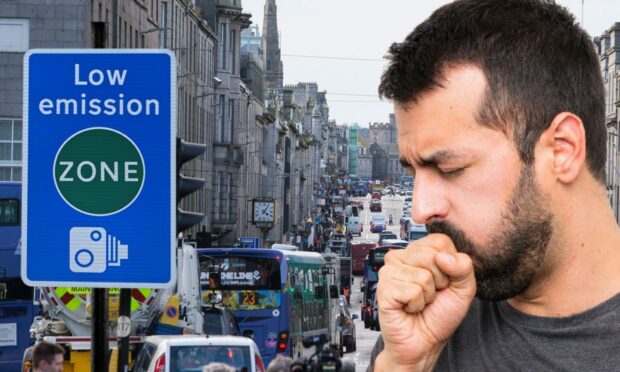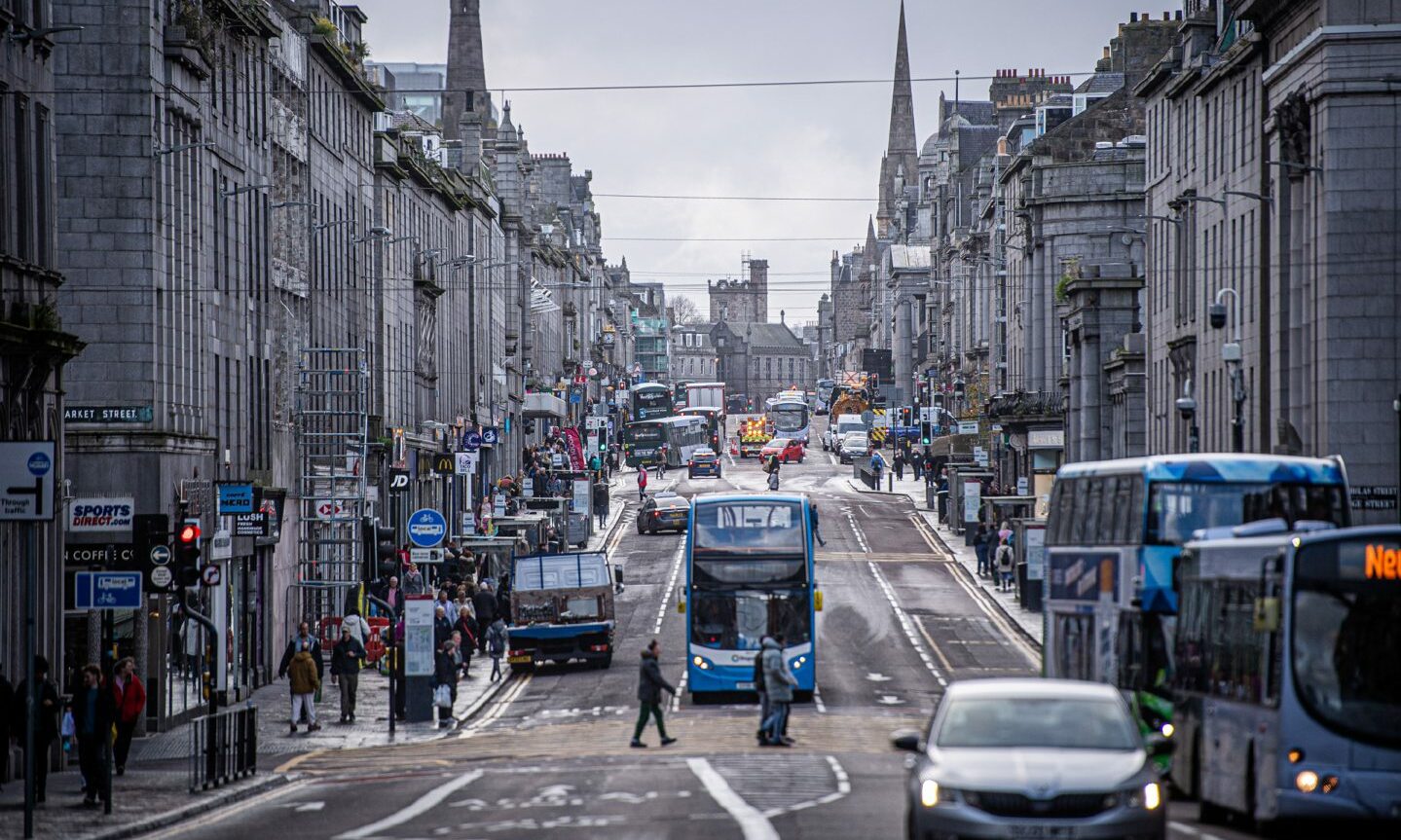A leading UK asthma expert says the full roll-out of Aberdeen’s low emission zone will likely prove unpopular – but must be done to help save lives.
It’s estimated that one in 33 Granite City deaths are linked to air pollution, compared to a national average of one in 19.
And there are hopes that the low emission zone (LEZ) in Aberdeen – banning high-emissions vehicles from some areas – will decrease this further.
The initiative technically came into force earlier this year, covering 100 city centre roads, including the entirety of Union Street.
You can use our guide to see if your street is included.
But there are currently no signs or cameras, as we’re still in the two-year grace period before any fines will be issued.
‘We will get used to it’
Other measures to lower traffic and boost Aberdeen’s air quality are also due to come into force soon, with more pedestrianisation, bus gates and car bans on the cards.
Business owners have railed against them, fearing the disruption they could bring.
But Professor Tim Hinks, a senior research fellow at Oxford University, says schemes like this are vital.
“Keeping our cities cleaner, out and about, is really essential,” he said.
“There’s great progress being made around clean air zones, and it’s quite hard for the public to get behind them.
“They just see the impact on their lives – that they can’t drive to the shops and businesses suffer.
“But if it’s done well, as a population we will realise how important it is to clean up our cities to keep people alive.
“We will get used to it and adapt.”
Prof Hinks, who also runs his own Oxford lab, is an expert in asthma and lung infections.
He visited the north-east at the end of last year to speak at the Asthma and Allergy Foundation’s Fighting For Air conference.
The event brought politicians, charities and policymakers together look at the numbers of asthma deaths and look at potential solutions.



Conversation